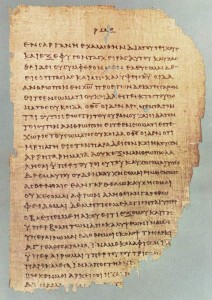
Papyrus 46, an ancient fragment of a copy of Paul’s 2nd letter to the Corinthian church, likely dating to 175-225 A.D.
Christianity is unique among world religions because it is so firmly rooted in history. Its sacred documents, collected within the New Testament (NT), are not simply the writings of a single person, nor are they just “pronouncements of divine wisdom” devoid of any historical context. Rather, the books of the New Testament are incredibly important historical documents.
They bring to us information about various peoples and societies, governments, laws, events, political conditions, and daily life during the first century. As historical documents, their accuracy can be judged against other sources from the same time period. The NT documents have been more closely scrutinized than any others in history and, contrary to some critics, they actually have a great track record for accuracy. Numerous times, critical scholars have declared them to be in error, only to be proven wrong by subsequent archeological or documentary finds.
But how did we get these documents? Continue reading
